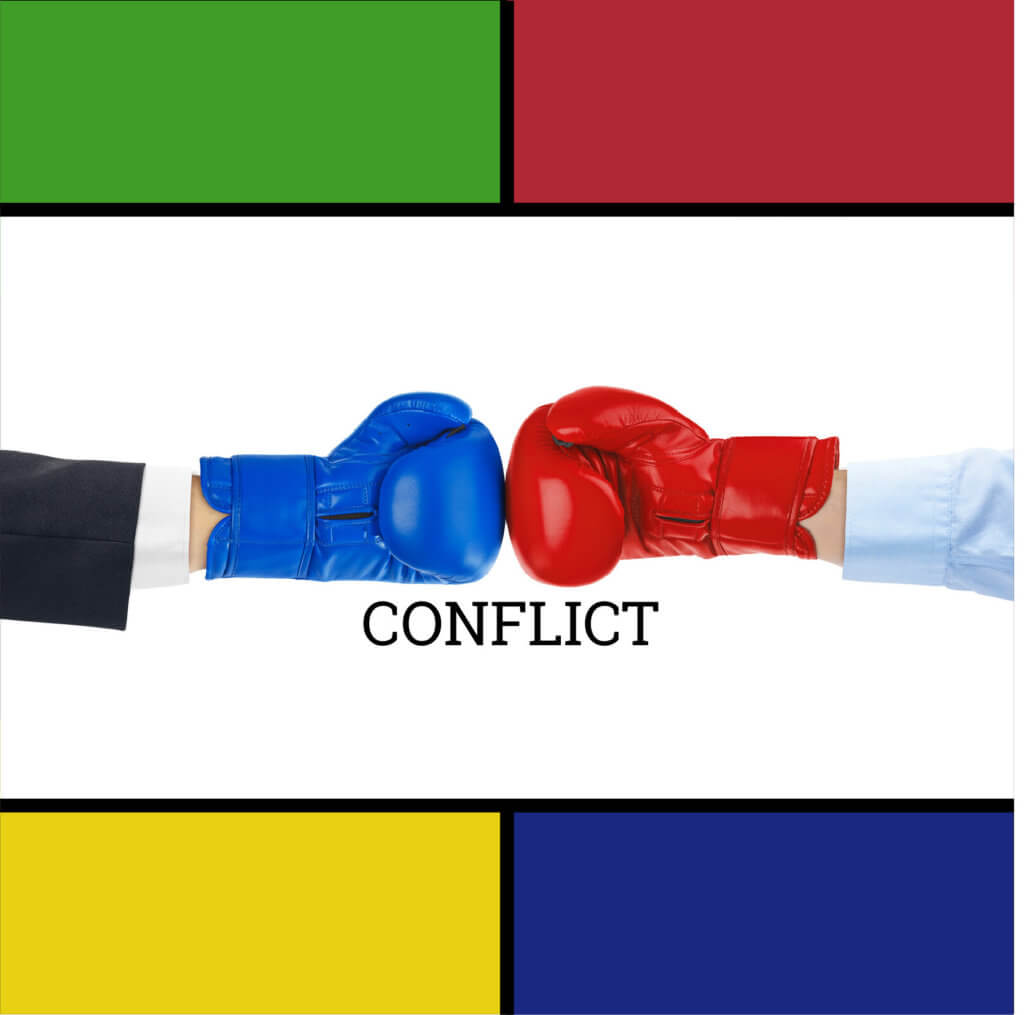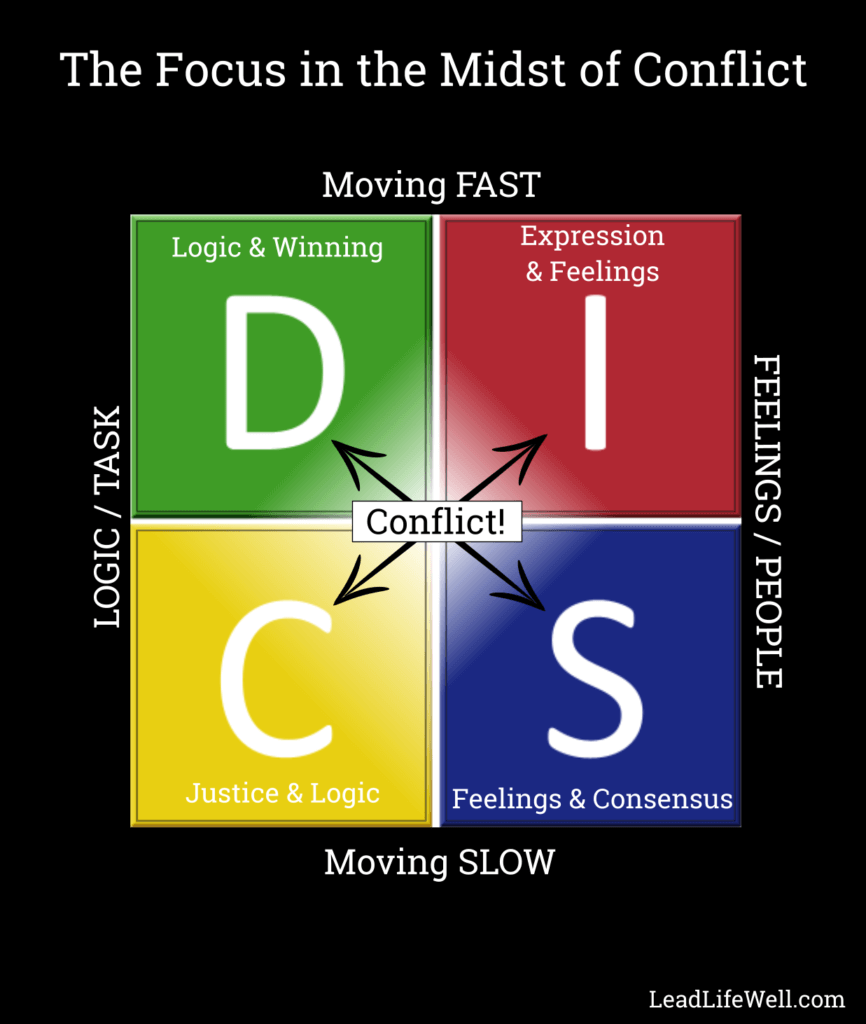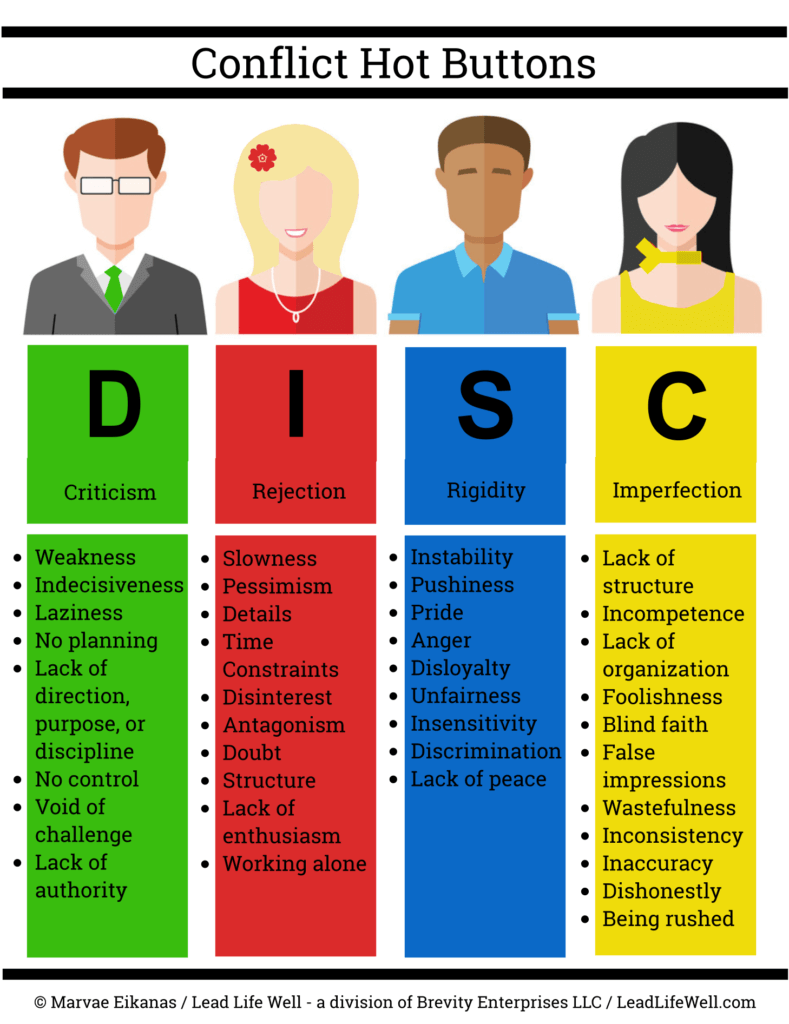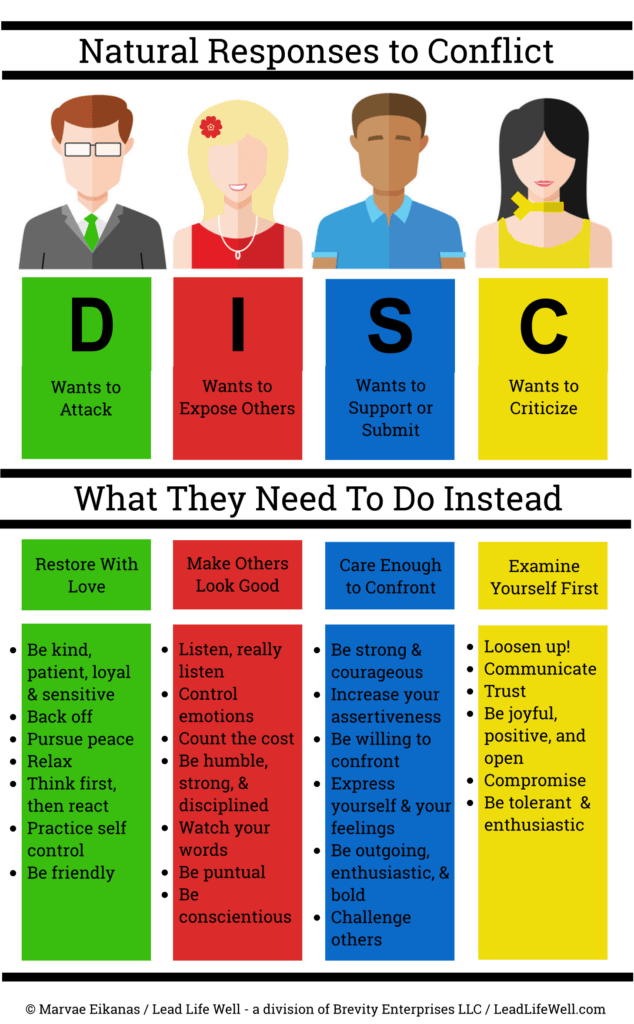Conquering Conflict: Understanding Different Behavioral Styles

A world without conflict – it sounds dreamy right? It’s just not very realistic! After all, siblings naturally engage in conflict from the start. It would be nice if conflict was limited to childhood, yet conflict is a factor in our relationships at home and at work!
I don’t know anyone who actually enjoys being at odds with others, yet some are more troubled by it than others. And when people are involved, children or adults, conflict is inevitable. It is literally a clash of styles. Implementing healthier ways of dealing with clashes is critical for your personal and professional relationships.
Conflict in and of itself isn’t negative. In fact, it can lead to far more creative solutions when approached in a win-win way!
Within the last week, I’ve encountered a half dozen or so situations where I was at odds with another person. Some of those situations were minor and easy to overlook and move on. Somme of those situations were not quite as simple. I bet you’ve experienced a few conflict situations of your own in the last week!
Unresolved conflict is discouraging! Conflicts arise out of…
- Clashes in personality or behavior styles
- Poor communication
- Differing perceptions
- Contradictory goals and/or priorities
- Performance issues
- Stressful and/or pressure filled situations
- Opposing values
Left unresolved, conflict has the power to undermine trust. That can lead to troubled personal relationships and affect productivity and take a toll on morale at work. Don’t be fooled. Because you are an integrated human, your unresolved conflict at home will ultimately affect your work and unresolved conflict at work will leak at home. Knowing how to respond to conflict is a valuable skill.
The first step to improving your ability to deal with conflict, is to understand yourself. What triggers you? How do you react? What do you need to focus on to successfully deal with others in the midst of conflict?
This graphic shows the basic differences in the DISC behavior styles. As you can see a person with a “D “behavior style will focus on logic, winning, tasks, and moving fast. In contrast, the “S” behavior style will focus on feelings, consensus, people, and moving slow. That’s a set up for conflict!
Similarly, the “I” behavior style is focused on expressing themselves, feelings, people and moving fast, while the “C: behavior style is focused on justice, logic, tasks, and moving slow which is also a set up for conflict.
Opposites are not the only ones who disagree. The pace can be an issue between individuals with “D” and “C” and “I” and “S” behavior styles. In the same way, the priorities of logic and tasks for “D” and C” behavioral styles can clash with the feelings and people focus of the “I” and “S” behavioral styles.
Understanding your own tendencies when conflict arises is essential. Being able to assess the behavioral style of the other party (or parties) and adapting is also key. Which of these typical hot buttons for each of the four DISC behavioral styles do you relate to?
For clarity, I’ve listed the four DISC behavioral styles here, but most people are a unique blend the behavioral styles. For example, I am a D/C. And because opposites attract, my husband is an I/S. While being opposites can be a source of tension, between the two of you, you also make up a “whole person” that encompasses all four behavioral styles which can be a tremendous benefit as well.
In order to improve your ability to respond to conflict, you must make an effort to keep your personality in check. Being a certain DISC style is never an excuse for bad behavior! Here are some ways that the different personality styles naturally react to conflict and some incredibly helpful tips on alternative ways to deal with conflict.
It takes time to understand yourself and others who may be completely different. Practice is also necessary to learn to reach solutions with those that are very different from yourself. And keep in mind, that some of the most spirited clashes can take place when the parties involved have the same behavioral style. In the same way, conflict can grow and become more intense under the surface when two individuals that are more prone to avoiding conflict are at odds.
Lastly, communicating with the DISC behavioral styles in mind goes a long way towards resolving conflicts successfully!
When those around you are familiar with the DISC behavior styles, don’t hesitate to communicate something like this: “I’m being a bit of a “D” right now by being so direct, but I would love to hear what makes this so important to you.” Or “My I side is taking over – I’m sorry. I really want to listen to you. What’ makes this so important to you?” Having these sorts of phrases in your back pocket can be a simple way to diffuse the intensity of a conflict for both you and the other party!
You can learn a whole lot more about how to communicate with the various DISC behavior styles in this blog post.
Think back on the last conflict you were engaged in big or small. What do you know now that would have helped you then?
Want to identify your unique DISC behavioral style or the behavioral styles on your team? Contact me here to get started.



